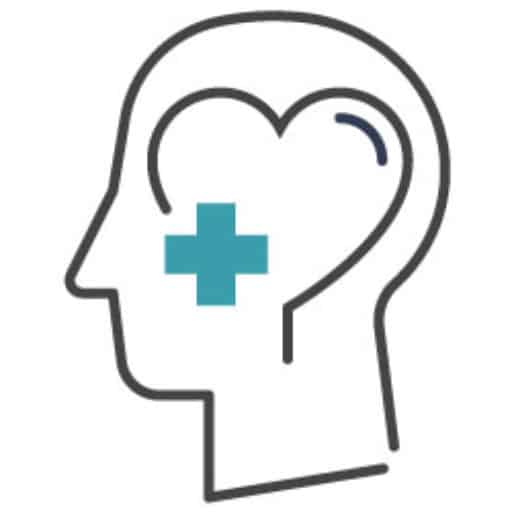Neurorehabilitation is a technique used to help people with mental health conditions retrain their brains to cope with these challenges. Neurological rehabilitation is a safe and noninvasive treatment used to reduce symptoms of depression, anxiety, post-traumatic stress disorder and substance addiction.
The term neurorehabilitation encompasses a range of techniques used by therapists, including brain mapping, neurotherapy feedback and neurostimulation therapy training. This treatment approach is often referred to as neurotherapy.
Neurorehabilitation is commonly incorporated into a wider treatment plan that may include individual cognitive behavioral therapy, psychodynamic therapy and group therapy sessions.
What Is Neurorehabilitation?
Neurorehabilitation is founded on the fact that it’s possible to map brain activity and detect areas of the brain that aren’t functioning properly. In the brain, tiny electrical currents and chemical reactions called brain waves are used to communicate between neurons. Under normal conditions, the brain regulates itself, but with mental illness, brain processes and neuron activity are adversely affected.
Therapists can measure these changes using sensors placed on the scalp. Then, using video and audio feedback, a therapist can help individuals retrain their brains to return to a normalized state. This is called neurofeedback therapy. Another technique is transcranial stimulation, in which a therapist uses tiny electric currents or magnetic fields to stimulate areas of the brain affected by drug or alcohol abuse. This type of noninvasive stimulation helps reset the brain and relieve symptoms associated with mental health issues.
How Neurorehabilitation Supports Brain Health and Mental Health
Neurotherapy leverages the neuroplasticity of the brain — the ability of neurons to change their behavior and connections with positive stimulation. Neuroplasticity exists in certain localized areas of the brain, including the hippocampus, amygdala and cerebral cortex. These areas are associated with memory, emotions and perception.
Brain Mapping
Brain mapping via an electroencephalogram is often the first step in neurorehabilitation. Using sensors placed on the skull, the EEG generates a plot of the brain’s spontaneous electrical activity. From this information, a therapist can identify neuroimaging biomarkers to reveal areas of abnormal activity.
For example, addictive mood- and mind-altering substances have a measurable and profound impact on brain activity. More specifically, alcohol and narcotics cause an unnatural release of neurotransmitters, including dopamine. This causes an intense feeling of pleasure and, over time, the brain associates drug or alcohol use with this euphoric feeling.
Neurofeedback Training
Once a therapist has mapped the brain and identified areas of abnormal activity, they can begin neurofeedback training. This process is specifically tailored to the individual. Using a combination of positive and negative reinforcement, the person learns to self-regulate their thinking to regain normal brain function.
Neurostimulation Therapy
Neurostimulation therapy uses gentle brain stimulation to support neural repair. It helps counter negative symptoms of mental health conditions and substance addiction such as anxiety, depression, cravings and withdrawal symptoms. Noninvasive neurostimulation uses low-current vibrational, electrical and biofeedback stimulation techniques to target affected areas of the brain.
Conditions That May Benefit From Neurological Rehabilitation
Some conditions may benefit from neurorehabilitation include:
- Attention deficit hyperactivity disorder. Studies have shown that neurofeedback therapy produces comparable results to medication for ADHD without the same side effects.
- Substance abuse disorder. Neurostimulation therapy can significantly reduce cravings caused by SUD. For example, research has shown that photobiomodulation using low-powered laser light is more effective than cognitive rehabilitation in reducing opioid cravings.
- Anxiety and depression. Electromagnetic neurostimulation, together with brain imaging, may restore normal neurotransmitter activity in the amygdala and insular cortex of the brain and speed up recovery from treatment-resistant depression and anxiety.
- Trauma and PTSD. In a clinical study, vagus nerve stimulation paired with prolonged exposure therapy caused the cessation of PTSD symptoms for periods of up to 6 months.
Common Techniques and Therapies Used
At Restore Mental Health, we use several neurorehabilitation treatments including transcranial stimulation, pulsed electromagnetic field therapy and biofeedback.
Transcranial Stimulation
Transcranial direct-current stimulation (tDCS) is a painless and noninvasive technique. During treatment, a continuous direct-current signal is fed into specific areas of the brain using tiny transmitters placed over the scalp. This weak current is used to increase neural activity in the cortical and subcortical areas of the brain and help recondition neural pathways. Research has shown tDCS may improve the symptoms of mental health conditions such as depression.
Pulsed Electromagnetic Field Therapy
This therapy uses magnetic fields to induce electromagnetic rhythms in the brain. Transmitters are placed around the head or on parts of the body affected by inflammation. Electromagnetic stimulation helps synchronize neuron activity and reduce symptoms.
Biosound Therapy
Biosound therapy is a unique program that uses an S-shaped bio-bed to transmit gentle sounds and vibrations into the body to reduce negative symptoms and distress. Biosound therapy can help reduce stress and relieve symptoms of addiction and mental health issues such as depression and anxiety. The treatment is often combined with heart rate variability monitoring to measure its efficacy.
Integrating Neurorehabilitation Into a Broader Treatment Plan
While neurorehabilitation is effective in its own right, Restore Mental Health believes it’s best used in conjunction with other addiction therapies. These may include:
- Medical detoxification for addiction
- Inpatient therapy followed by intensive outpatient therapy
- Individual therapies such as cognitive behavioral therapy, exposure therapy and eye movement desensitization and reprocessing
- Group therapy to enhance social skills and learn coping strategies
- Psychiatry and medication to help treat ongoing symptoms
- Psychological support to help restore confidence
Through these methods, we provide a continuum of support while structuring the treatment program to match individual needs.
How to Find a Qualified Neurorehabilitation Program
If you or a loved one needs help for addiction or a mental health disorder, contact us at Restore Mental Health to speak to a compassionate counselor. Based in Deerfield Beach in South Florida, we’re open 24-7. Our programs include neurological rehabilitation as well as inpatient and outpatient care. We work with most insurers and offer affordable cash payment alternatives.



